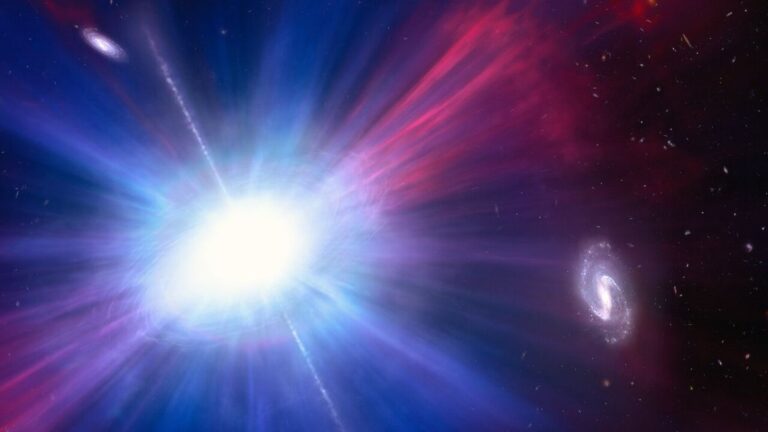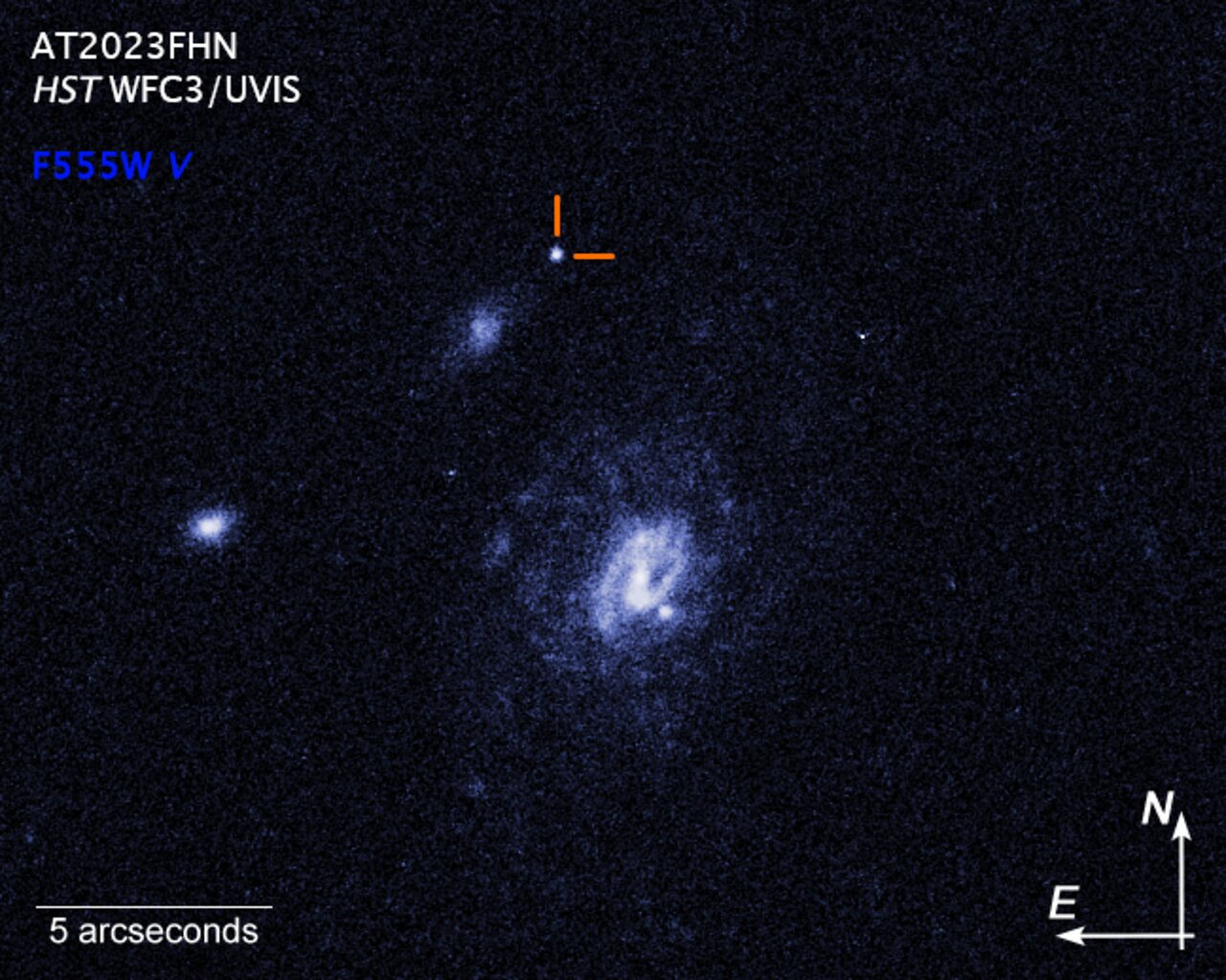
[ad_1]
A mysterious cosmic explosion created a brilliant flash of light in the space between two galaxies over 3 billion light-years away.
The optical flash, which was one of the brightest bursts of blue light in the universe but lasted only a few days, is the latest example of a rare breed of brief astronomical event called a luminous fast blue optical transient (LFBOT).
LFBOTs are a complete mystery. The first one to be discovered wasn’t observed until 2018. Designated AT2018cow, it was positioned in the spiral arm of its galaxy 200 million light-years away. Nicknamed “the Cow,” it was up to 100 times brighter than an ordinary supernova, and was also bright in radio waves, ultraviolet and X-rays. If it was a supernova, it behaved very oddly. Usually, a supernova stays bright for weeks, or even months, and has a recognizable spectrum. Yet the Cow faded after a few days.
Related: Did scientists solve the mystery of the super-bright exploding ‘cow’ in space?
Similar bursts of light are discovered at a rate of about one per year, and they are nicknamed after animals based on the last three letters in their designation. Other LFBOTs have been dubbed the Camel, the Koala and the Tasmanian Devil. This latest LFBOT, detected by the Zwicky Transient Facility at Palomar Observatory in California on April 10, is designated AT2023fhn and, consequently, has been nicknamed “the Finch.”
After the LFBOT’s initial detection, a preplanned sequence of observations by telescopes on the ground and in space was enacted. The Gemini South telescope in Chile measured the Finch’s spectrum and found that it was 20,000 degrees Celsius (about 36,000 degrees Fahrenheit) — which is hot, but not as hot as some massive stars and certainly not as hot as a supernova. Redshift measurements place it about 3 billion light-years away, a huge distance at which only the Hubble Space Telescope could resolve its host galaxy.
And when it did, astronomers made a shocking observation: Finch was not in a galaxy at all.
All previous LFBOTs have been observed in the spiral arms of galaxies, but Hubble observed that the Finch was in intergalactic space, about 50,000 light-years from one large spiral galaxy and 15,000 light-years from a small galaxy.

Its location would seem to go against the possibility that it could be the supernova of an exploding massive star. While there are rogue stars that get flung out of a galaxy and into intergalactic space following an encounter with a supermassive black hole, massive stars live only a few million years before going supernova, which is not enough time for a star to get all the way out there.
“The more we learn about LFBOTs, the more they surprise us,” Ashley Chrimes, a research fellow at the European Space Agency and lead author of a new paper describing the recently observed LFBOT, said in a statement. “We’ve shown that LFBOTs can occur a long way from the center of the nearest galaxy, and the location of the Finch is not what we expect for any kind of supernova.”
Chrimes and his team are focusing on two possible explanations. One is that the Finch was a flash of light caused by a star being ripped apart by an intermediate-mass black hole, which is a black hole with a mass between 100 and a few thousand times the mass of the sun. Intermediate-mass black holes are thought to reside at the cores of some globular star clusters, which lurk on the outskirts of galaxies. Chrimes plans to eventually use the powerful optics of the James Webb Space Telescope to search for any faint globular clusters in the same location as the Finch.
Alternatively, the Finch might have been a kilonova, which is the explosion resulting from the collision of two neutron stars (or sometimes between a neutron star and a black hole). The Laser Interferometer Gravitational-Wave Observatory was not operating at the time to detect any possible gravitational waves, or ripples in spacetime,from a neutron star merger (its latest observing run began in May). And at 3 billion light-years away, the Finch may have been too distant to detect anyway. No associated gamma-ray burst was detected.
“The discovery poses many more questions than it answers,” Chrimes said. “More work is needed to figure out which of the many possible explanations is the right one.”
The findings have been accepted for publication in the journal Monthly Notices of the Royal Astronomical Society.
[ad_2]